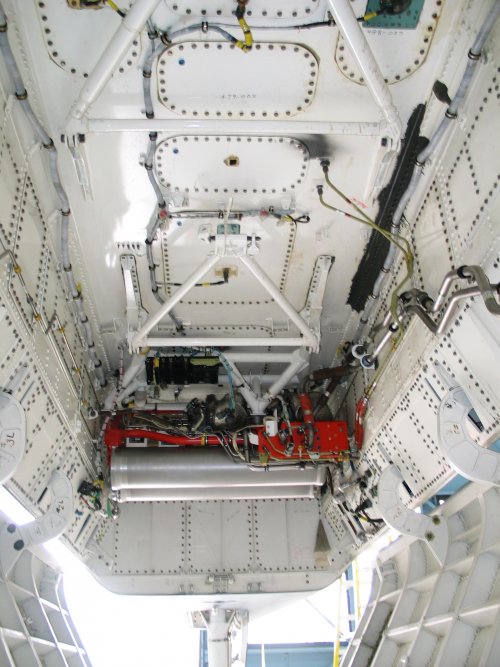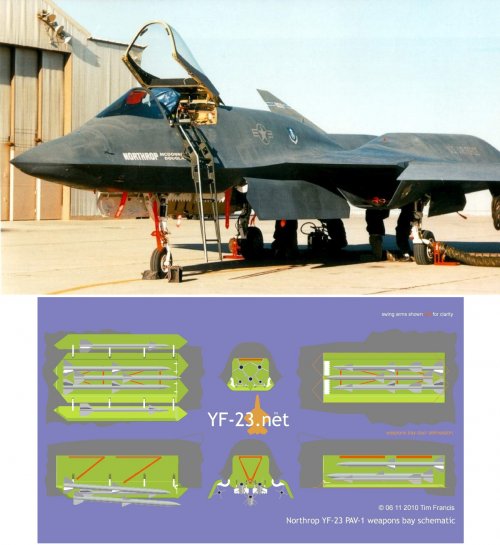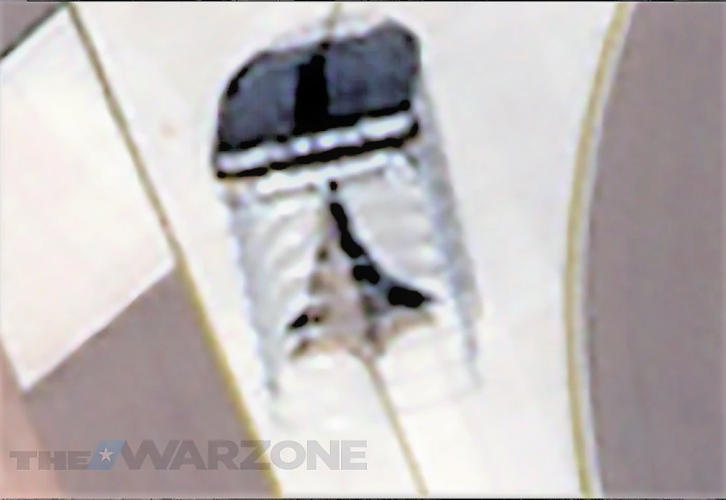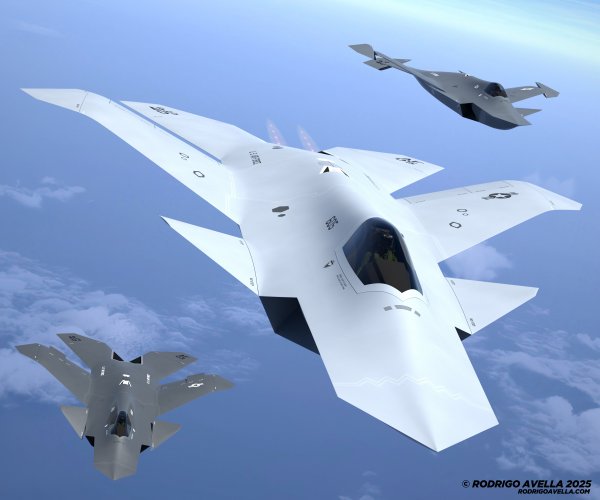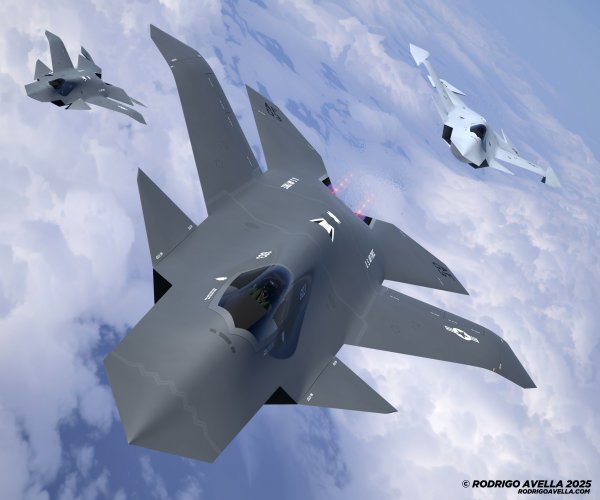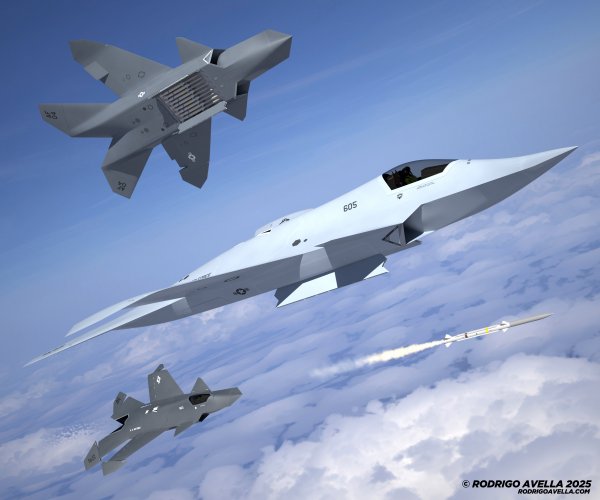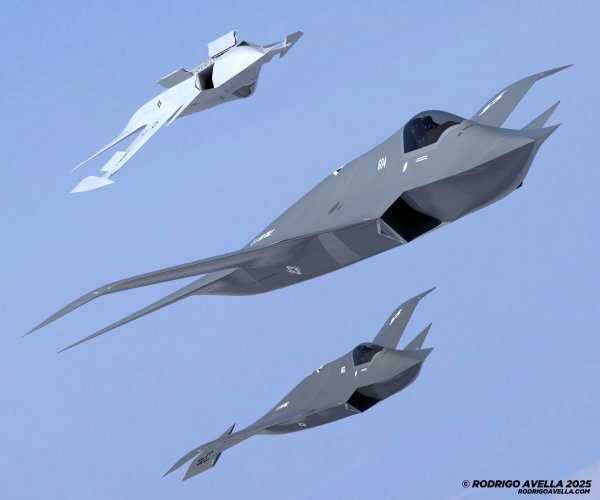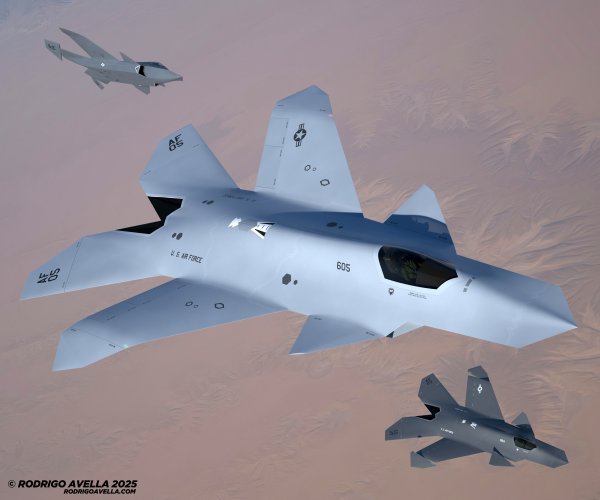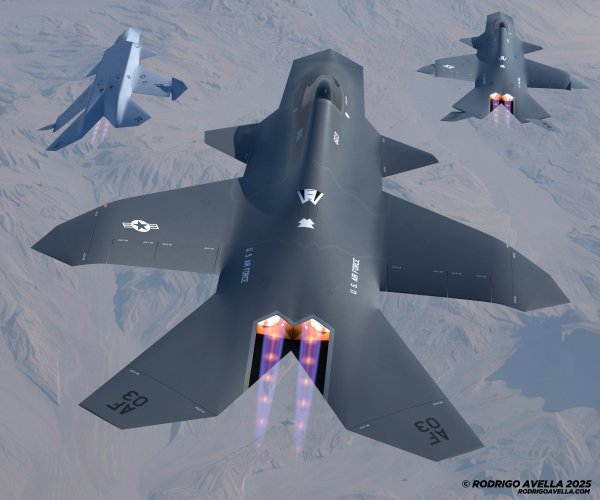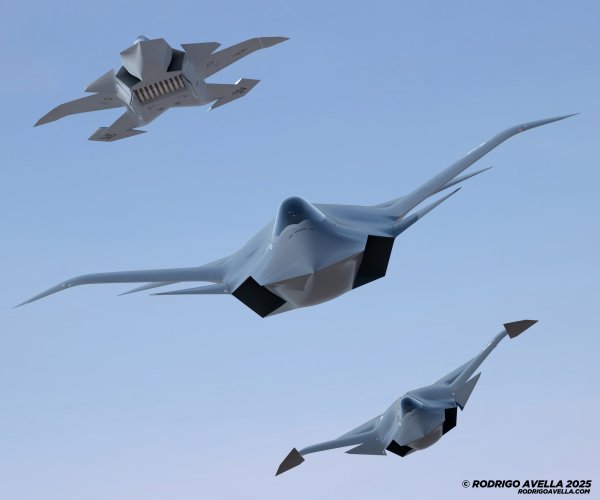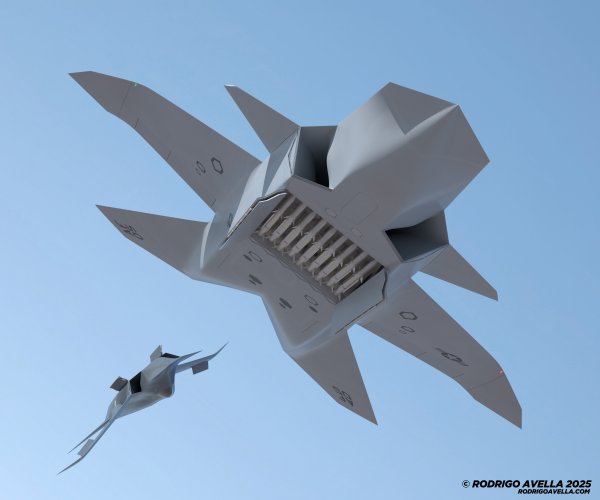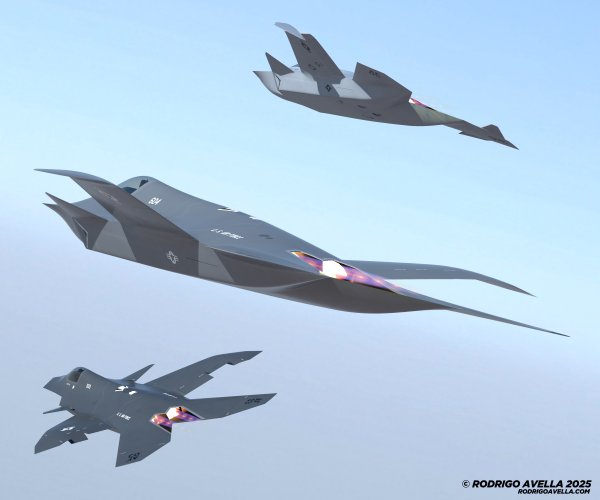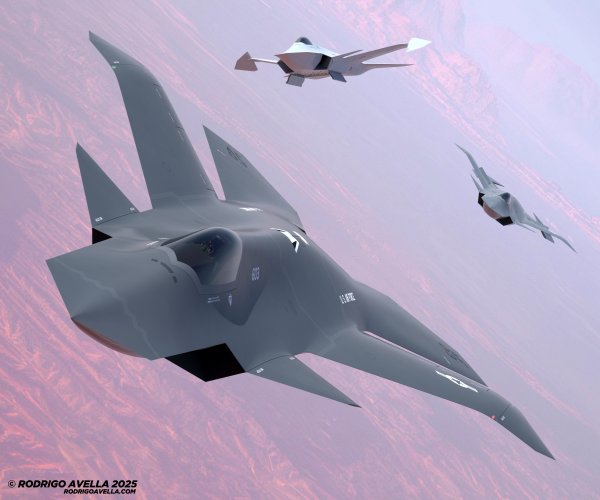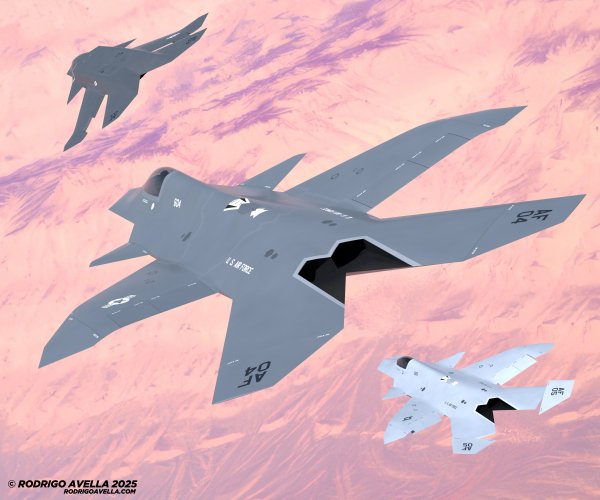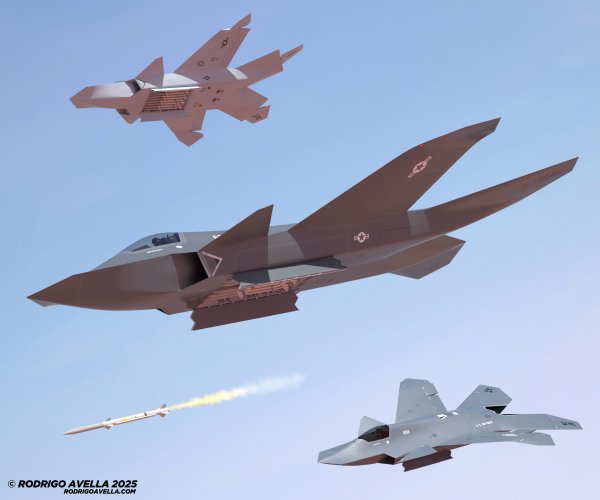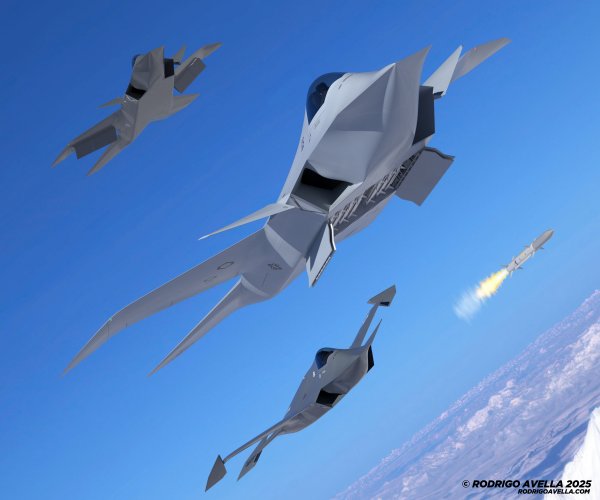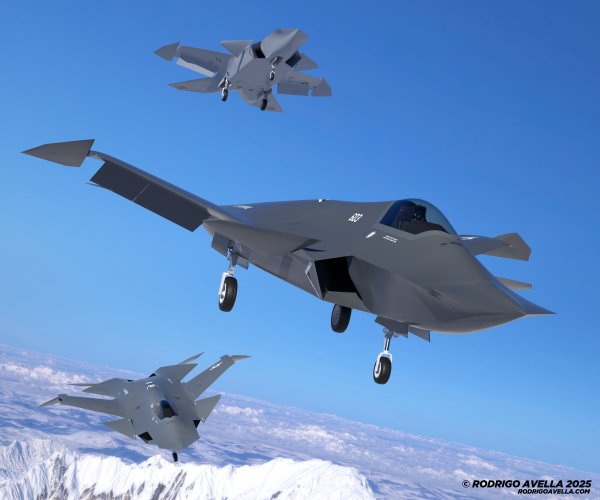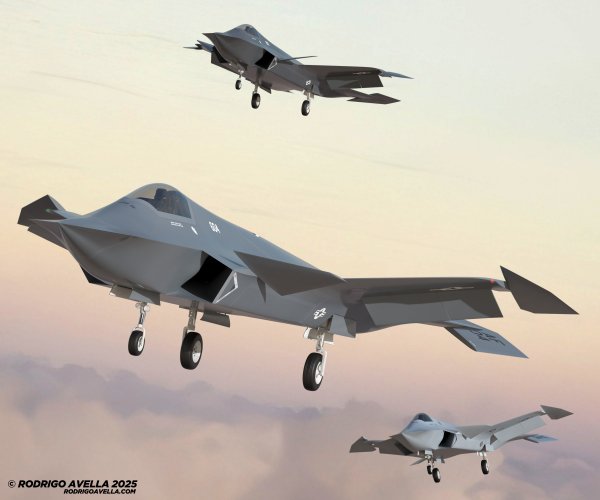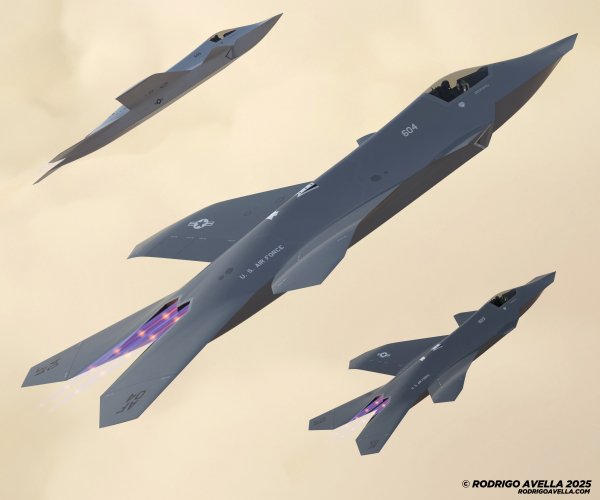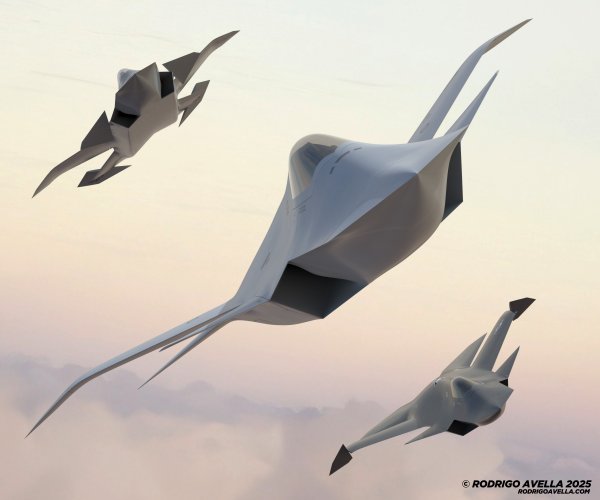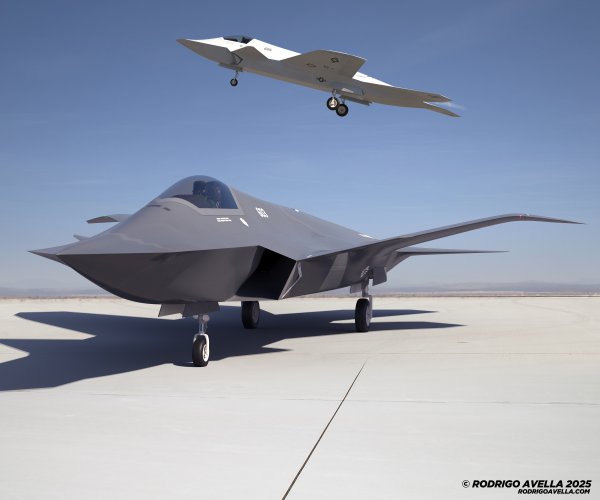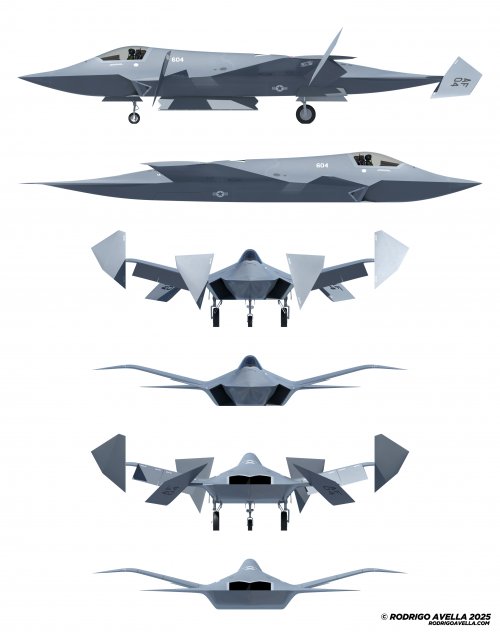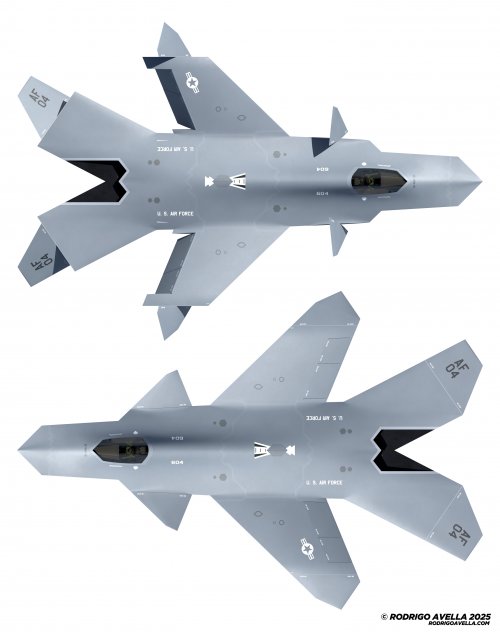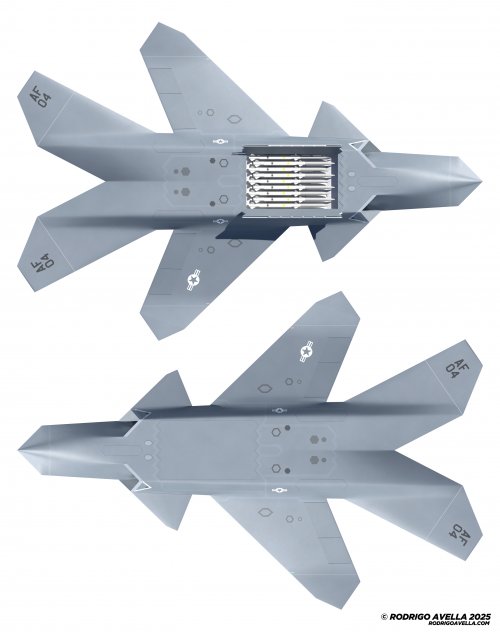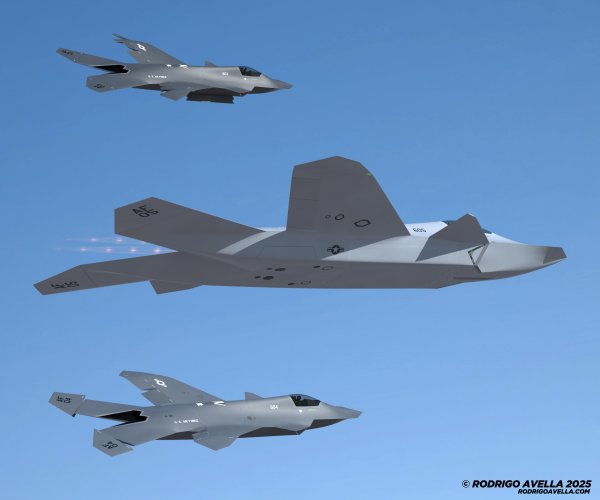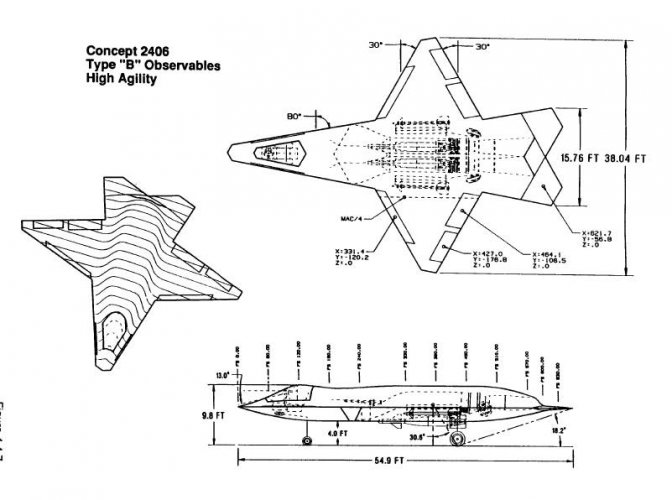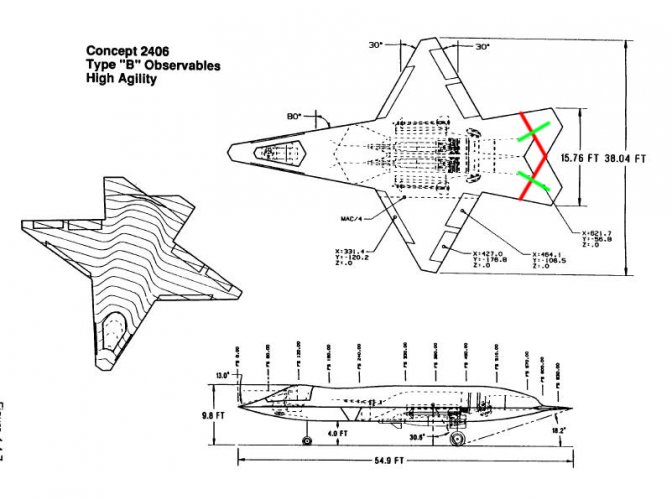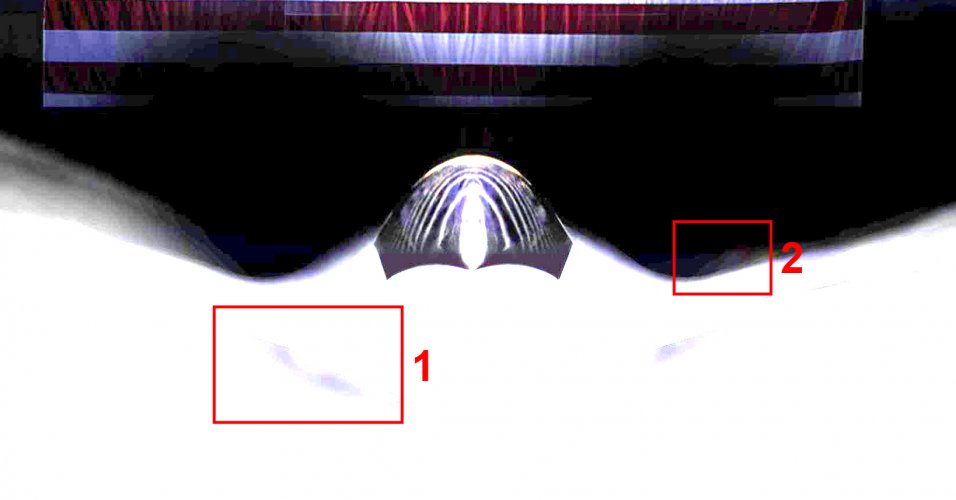Hello.
This model is 21 meters long and has a 14.5-meter wingspan.
Regarding the tail rotation, I based my observations on NASA and McDonnell Douglas studies from the 1990s:
View attachment 768483
If you look at this image, I made the tails rotate on their axis along the green line. But I don't know if they'll rotate on their axis along the red line. The problem if they do so relative to the red line is that rotating upward would disrupt the engine exhaust outlet. That's why I always assumed they should rotate on their axis along the green line:
View attachment 768484
Because of all this, when I saw the Vodoo II patch, I assumed that plane would have flat tails like the ones studied.
I think Boeing took advantage of everything McDonnell Douglas studied in the 1990s: dihedral wings, unconventional flat tails, diamond-shaped canards from the X36.
I'm almost convinced the F47 will have tails of this style.
What's more, running Photoshop tests on the front-view render, you can see that the wings of the F47 shown in that render never dip (as they do on the Bird of Prey), but instead maintain the 15-degree dihedral angle throughout their entire length and end in a point (similar to the Vodoo II's patch).
When I make models, I like to research as much information as possible.
This model I published isn't based on the F47, but on what I thought before the F47 was published (I only added the canards).
That's why I think the dihedral wings may be so the flat tails can find a clean airflow. That, and combined with what I saw in the render, I also believe the F47 will have movable wingtips.
Maybe I'm crazy and wrong.
Greetings and thanks for your comment!
